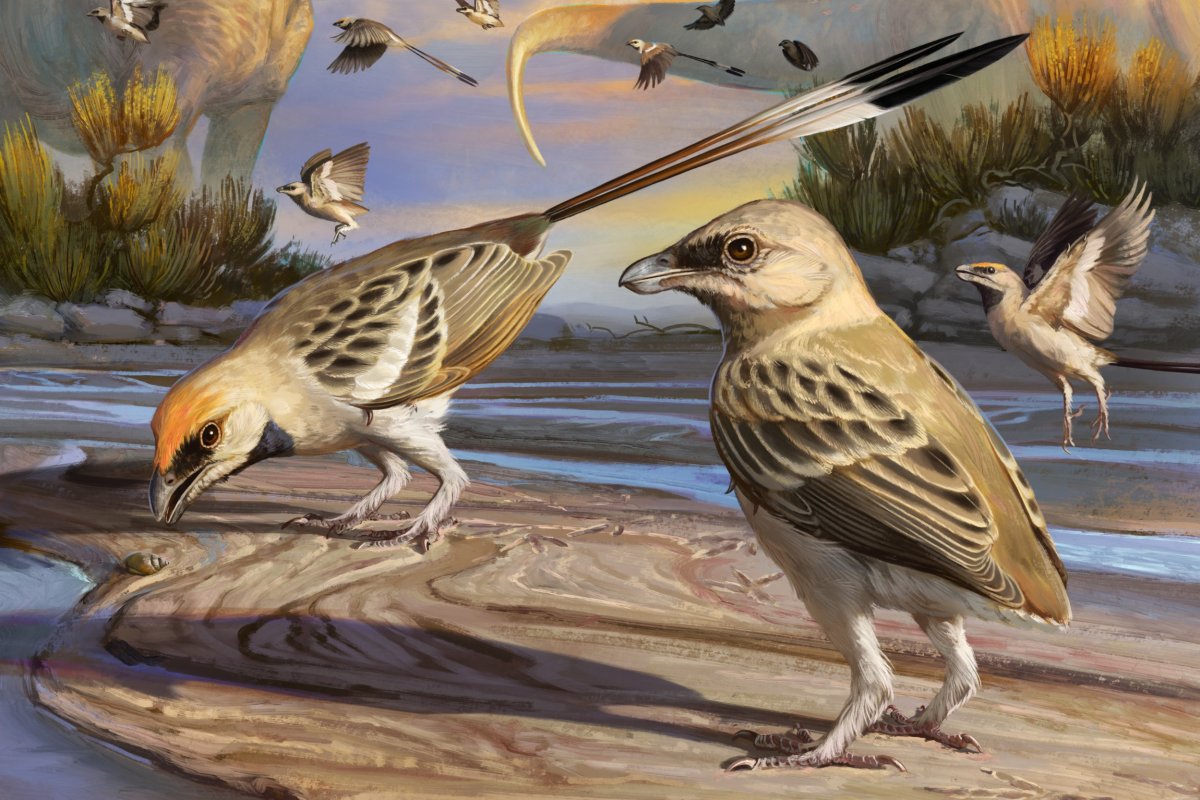Paleontologists have revealed a previously unknown species of early bird following the discovery of a remarkable "one-of-a-kind" fossil.
The prehistoric species, named Navaornis hestiae, lived approximately 80 million years ago—before the mass extinction event that wiped out all non-avian dinosaurs, which occurred around 66 million years ago.
The fossil specimen, described as "exquisitely preserved", was uncovered in 2016 at a site in the locality of Presidente Prudente, São Paolo state, Brazil. It has now been described as a new species in a study published in the journal Nature.
Remarkably, the complete skull of the bird, which would have been roughly the size of a starling, has been preserved intact in three dimensions. This kind of preservation is rare for any fossil bird, but particularly one this old, making the discovery one of the most significant finds of its kind. Researchers hope the fossil will cast new light on how the unique brains and intelligence of modern birds evolved—an enduring mystery in the field of paleontology.

"This fossil is truly so one-of-a-kind that I was awestruck from the moment I first saw it to the moment I finished assembling all the skull bones and the brain, which lets us fully appreciate the anatomy of this early bird," study co-lead author Guillermo Navalón with the Department of Earth Sciences (DES) at the University of Cambridge in the United Kingdom said in a press release.
"Modern birds have some of the most advanced cognitive capabilities in the animal kingdom, comparable only with mammals," Daniel Field, a senior author of the study with the DES, said in the release. "But scientists have struggled to understand how and when the unique brains and remarkable intelligence of birds evolved—the field has been awaiting the discovery of a fossil exactly like this one."
A dearth of three-dimensional fossils from the Mesozoic Era—a geologic period that lasted from around 252 million years ago to 66 million years ago—has long hindered our understanding of the origin of the distinctive skull and brain of modern birds.
But the discovery of Navaornis represents a golden opportunity to glean insights into this evolutionary question, given that it is one of the best-preserved bird fossils ever found from the Mesozoic. The extraordinary preservation of the skull even enabled the researchers to digitally reconstruct the bird's skull and brain in remarkable detail.
The fossil discovery fills a 70-million-year gap in our understanding of how the brains of birds evolved. Prior to this find, the knowledge of the evolutionary transition between the brain of the 150-million-year-old Archaeopteryx—the earliest bird-like dinosaur—and modern birds was practically non-existent.
"This represents nearly 70 million years of avian evolution in which all the major lineages of Mesozoic birds originated—including the first representatives of the birds that live today," Navalón said. "Navaornis sits right in the middle of this 70-million-year gap and informs us about what happened between these two evolutionary points."
Do you have an animal or nature story to share with Newsweek? Do you have a question about paleontology? Let us know via science@newsweek.com.



















:quality(85):upscale()/2024/04/24/878/n/3019466/36c5693c662965c5d1ce91.72473705_.jpg)
 English (US) ·
English (US) ·